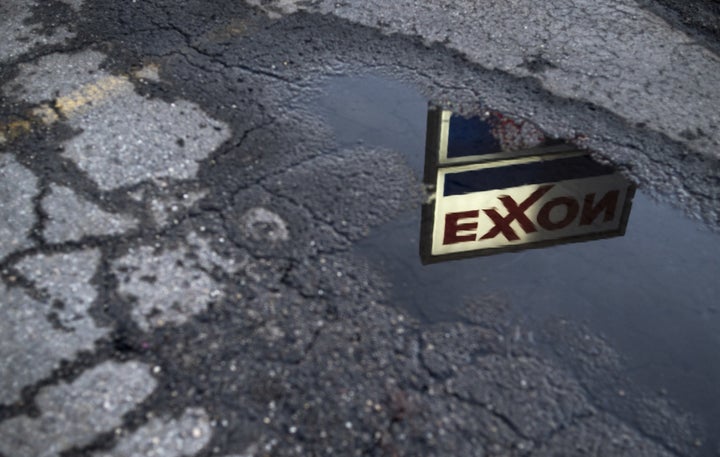
The newest wave of climate change lawsuits doesn’t target states or the federal government, or even the power plants that spew planet-warming pollution.
These latest suits are from cities and counties who want to go after the oil, natural gas and coal producers directly, demanding money to help them cover the escalating costs of wildfires, landslides and other climate-linked disasters.
The cases are winnable, these plaintiffs argue, because of new findings in climate science that confidently connect these companies to their share of the climate crisis, and assess how much rising temperatures are influencing extreme weather events.
In January, New York City became the latest of nine American cities and counties to sue fossil fuel producers. The city hopes to hold BP, Chevron, ConocoPhilips, ExxonMobil and Royal Dutch Shell liable for the current and future billions of dollars it will take to gird the city against worsening heat waves and rising seas along its 520 miles of coastline.
New York’s lawsuit followed two separate but coordinated cases that San Francisco and Oakland brought against the same group of corporations in September. Those cases prompted a federal judge to hold a high-profile tutorial on climate science in late March that saw oil companies forced to retreat from decades of climate science denial.
“We are seeking an abatement fund that would be contributed to by the defendants in this case, that will pay for seawalls and other measures to cope with sea level rise,” said San Francisco City Attorney Dennis Herrera. Sea level rise threatens to put tens of thousands of acres of land in Oakland and San Francisco under as much as 66 inches of seawater by 2100. “Look at what’s at risk in San Francisco … $10 billion worth of public and $39 billion worth of private property,” Herrera said.
These fossil fuel firms reaped huge profits from supplying the carbon-heavy fuels that fed climate change, which now put all this valuable land at risk, he said. The companies did so even after they understood the climate consequences and hid that information from the public, Herrera added. So under the well-established legal doctrine of causing a public nuisance, or doing something that, while not illegal, is likely to injure one or more members of the general public, these firms should be on the hook for paying, he said.
“Any successful litigation depends on a basic causal chain. At one end you need a plaintiff who’s identifiable and has suffered a discrete and particular harm,” said Carroll Muffett, president and CEO of the Center for International Environmental Law. “At the other end you need an identifiable defendant or group of defendants who have caused that harm, and in doing so violated some standard of care.”
For climate law, a crucial link in that chain appeared in 2013, when the journal Climatic Science published a groundbreaking study. Led by geographer Richard Heede, director of the Colorado-based Climate Accountability Institute, this “Carbon Majors” research project gathered over 150 years of production information from fossil fuel extractors and cement producers, spanning the years 1854 to 2010, then analyzed how much each firm’s products had contributed to the unnatural rise in atmospheric carbon.
Heede and his team found that just 90 entities have created two-thirds of all historic greenhouse gas pollution during the industrial era, most of them still in business today. Fifty are investor-owned firms, including BP, ConocoPhilips, ExxonMobil and Shell.
This finding was “a watershed in the growth of the modern wave of climate litigation,” Muffett said, because it “belies the myth that everyone is responsible for climate change … If you can document a relative handful of large actors that had a big impact on the climate crisis over time, the courts know how to deal with that.”
Lawyers are also tapping into rapid improvements in attribution science, which measures how much climate change is amplifying the intensity of extreme weather, said Ken Adams, coordinating counsel for U.S. litigation at the Center for Climate Integrity. Studies that might have taken a year or more to complete in the mid-2000s can now appear just weeks after a major weather event.
“It’s only in the last 18 to 24 months that the science of climate attribution has been increasingly developed to point that today, lawyers like me can listen to the scientists and say, ‘Yes, I can put this science on [the stand] through witnesses, and prevail through a hearing where judge has to decide if this is science at a level that jury should be allowed to hear,’” Adams said.
In December, just a few months after Hurricane Harvey’s record-breaking 40 inches of rain killed over 80 people and displaced thousands in Houston, studies published in the journals Environmental Research Letters and Geophysical Research Letters found that climate change had increased that rainfall by 15 to 38 percent.
The city leaders pursuing damages say this is the kind of evidence that helps their cases against major fossil fuel companies.
“For about 50 years they were engaged in this massive PR campaign to downplay the risk associated with global warming because it could benefit the corporate bottom line,” said San Francisco’s Herrera. “Now it’s time for them to pay for their deception, as opposed to taxpayers.”
